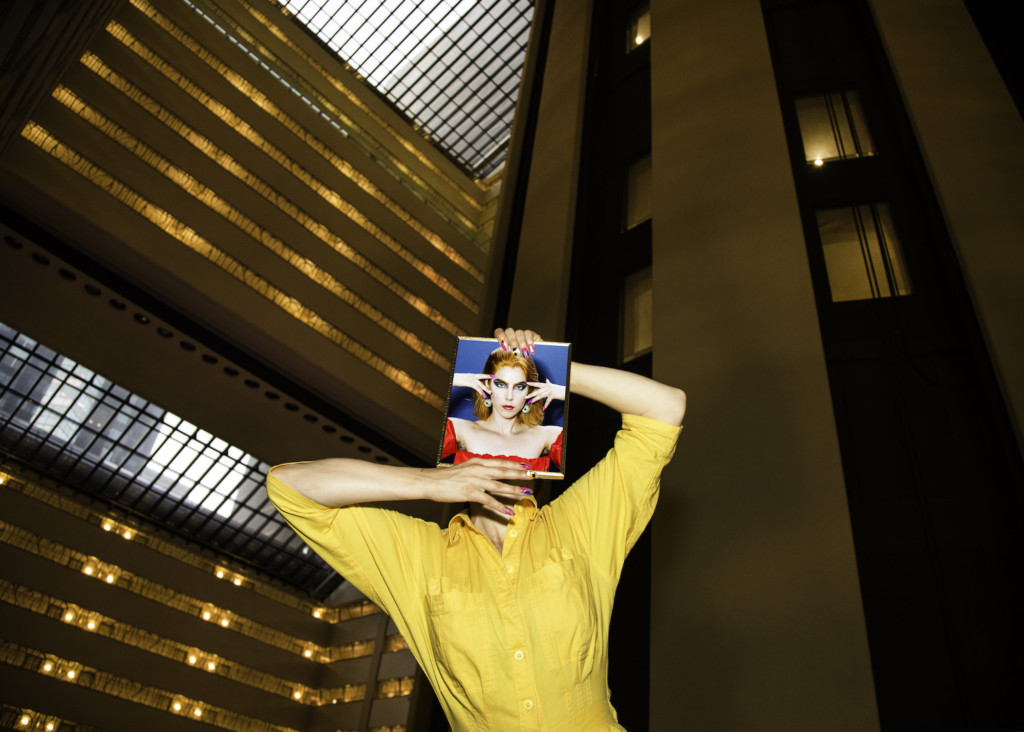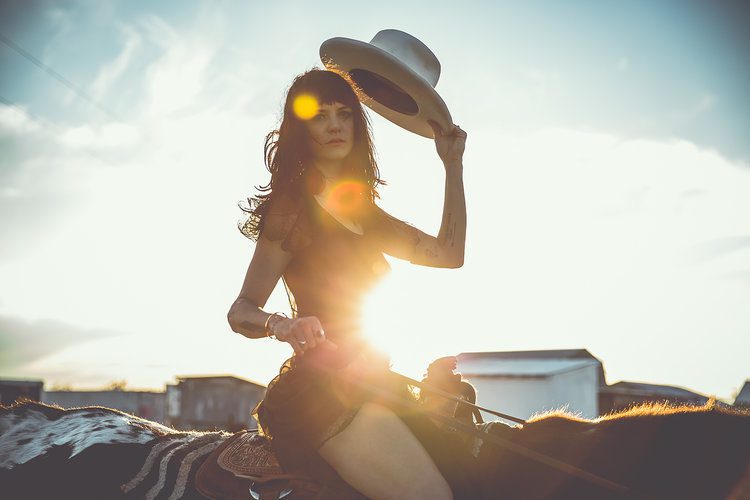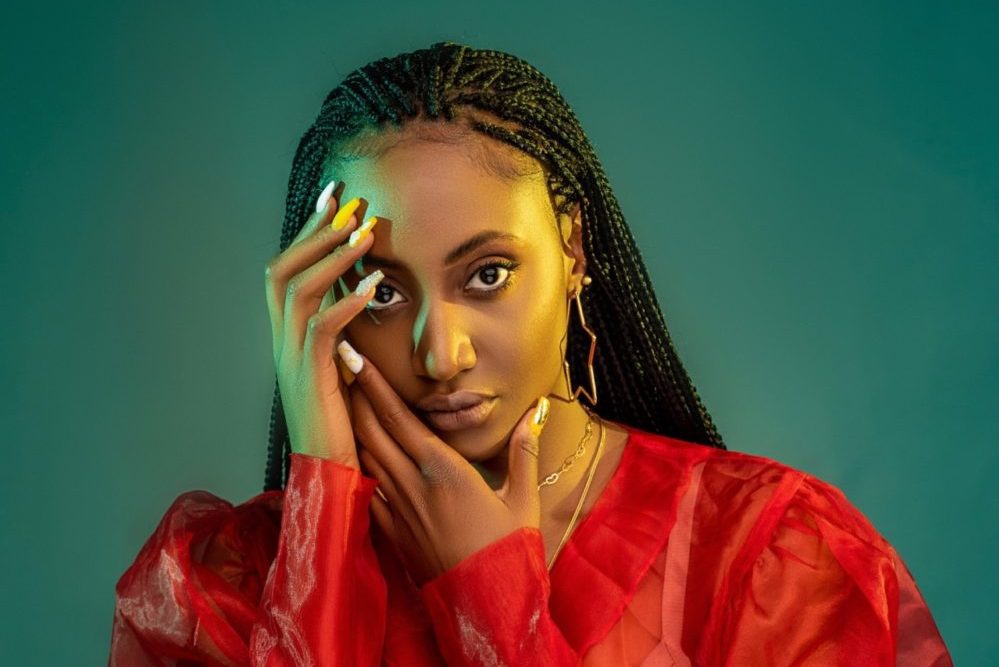

René Kladzyk has made it her artistic purpose to merge various media since the very beginning of her musical project Ziemba; her debut LP came with an incense made from flowers in and around her childhood home, and her live shows frequently feature the diffusion of scents she’s created to go along with the specific experience. Now, inspired by singing collectively with Colin Self’s XHOIR, feminist science fiction, Nabokov’s treatise on time, and the neofuturistic architecture of John Portman, Kladzyk has launched the first phase of Ardis, a high-concept three-part album that explores utopia from a human perspective.
Essentially, Ardis is a parallel version of Earth, with “necessary changes” having been made. Its creation was a direct response to Trump’s election, Kladzyk explains. “I felt really devastated by a lot of what I was seeing in America and I wanted to talk about it but in a way that didn’t just perpetuate me feeling devastated by it,” she says. “How can I talk about this in a way that’s not just dwelling on how upsetting it is, but instead thinking about possible alternatives and mobilizing in a way that’s fantastical and fun and uplifting? If you believe that cultural change is fueled by art and creative work, which I do, then people who are making work that envisions possible alternative futures can have a real material impact on the world we live in here.”
The first five songs from the LP, which comprise Part One, were released in February, along with a video for “Veritas in Terra” that brings Kladzyk’s concepts into the real world via John Portman’s architecture. His buildings have served as the inspiration for Delta City in Robocop, and appeared in sci-fi classics and recent blockbusters alike, from John Carpenter’s Escape From LA to the Divergent series. Kladzyk first encountered his work on a trip to New York City (which she now calls home) during her teens, when she ventured into the Marriott Marquis in Times Square. “Veritas in Terra” was shot in three Atlanta hotels; Portman’s architectural thumbprint is everywhere in his home city, characterized by the multi-storied arrangement of floors overlooking a towering atrium, often with a glass elevator that traverses it like a an electrical impulse running up a human spine. Indeed, this is the intended visual allusion, one which Kladzyk mirrors in relating humanity to the sprawling scale of a futuristic cityscape. “It’s an inter-scalar thing – it’s like, if you look at a building like a body, and a body like a song, you find the commonalities in the way we structure ideas to the way we structure our world on the macro level,” she explains.
The video was co-directed by Kladzyk, Megan Mack, and Allison Halter, and it wasn’t an easy shoot, considering they were forcibly removed from the Portman-designed Hyatt, Westin, and Marriott hotels. “We filmed in [the Hyatt] and almost immediately got in trouble… then I was like, okay, we have to be a little bit more careful. And then we got kicked out of another place,” she says with a laugh. “We were very cautious with the Marriott Marquis. We mostly filmed from like 4-6 in the morning. We got kicked out while shooting the last shot; I knew we would because it was right in front of the concierge desk.”
That shot became one of the opening scenes in “Veritas” – Kladzyk looks up through the atrium, wearing a bright yellow jumpsuit. Throughout the video she’s “simultaneously exploring but also a little hunted, but then also realizing that there are all these different versions of me.” She says that Portman’s buildings support an almost voyeuristic tendency that she wanted to highlight: “[The atrium] changes how you look at other humans – you can see people so far away and they look so tiny. They often aren’t aware that you’re looking at them, but you can’t help [it] because the nature of the space encourages you to look.” Overall, it was the fact that Portman’s buildings are like parallel universes unto themselves that attracted Kladzyk to his work, which has been both credited with revitalizing formerly desolate downtown areas as well as criticized for being too insular.
 The two remaining segments of Ardis will appear in April and June, each with their own specific fragrance accompaniment. This March, Kladzyk begins a month-long residency at Red Hook artspace Pioneer Works, which will culminate in a musical version of Ardis on April 14. It will expand upon the excerpt she performed at MoMA Ps1 at the end of 2017, which featured herself and her sister Anna discovering, then destroying, a fragrant utopia before rebuilding it. “One of the narrative arcs [of the project] is me as a human, trying to open doorways to Ardis, failing and trying again, and in the process finding it in all these different places,” she says. The Pioneer Works performance, she adds, will feature “a number of other performers, there’ll be a large choir, and other musicians… I’m working with a really incredible set designer, and there’ll be wild costumes, but it will largely be the music interacting with visual signifiers of the world.”
The two remaining segments of Ardis will appear in April and June, each with their own specific fragrance accompaniment. This March, Kladzyk begins a month-long residency at Red Hook artspace Pioneer Works, which will culminate in a musical version of Ardis on April 14. It will expand upon the excerpt she performed at MoMA Ps1 at the end of 2017, which featured herself and her sister Anna discovering, then destroying, a fragrant utopia before rebuilding it. “One of the narrative arcs [of the project] is me as a human, trying to open doorways to Ardis, failing and trying again, and in the process finding it in all these different places,” she says. The Pioneer Works performance, she adds, will feature “a number of other performers, there’ll be a large choir, and other musicians… I’m working with a really incredible set designer, and there’ll be wild costumes, but it will largely be the music interacting with visual signifiers of the world.”
Ziemba will also perform a handful of more straightfoward shows on the West Coast with Teeny Lieberson’s solo endeavor Lou Tides in the coming months, as well as some dates throughout the Mid- and Southwest. She’s performed some of the songs from Ardis in a live setting before – “Ugly Ambitious Women,” in particular, appeared on a 2015 EP, and Kladzyk says she has more material she’s interested in reimagining – and will do so again at Secret Project Robot next week. Ever prolific, she’s currently writing songs that are a little more grounded and personal, but whether she revisits Ardis in the future remains to be seen. “We’ll see what path it follows. Some of that may depend on how people respond to it, and the way that I learn from it after touring it,” she says. Though she hesitates to say that she makes therapeutic music, she does hope Ardis will offer others some catharsis, as it has for her to imagine such a place.
“[Someone asked] ‘What does Ardis look like? What’s it like there?'” recalls Kladzyk. “In short, I don’t exactly know. I’m still looking for it and I’m still learning from it. But that’s kind of the idea – maybe we need to reject this idea that we as humans can be certain, and instead focus on expansiveness, and listening and connection.”




